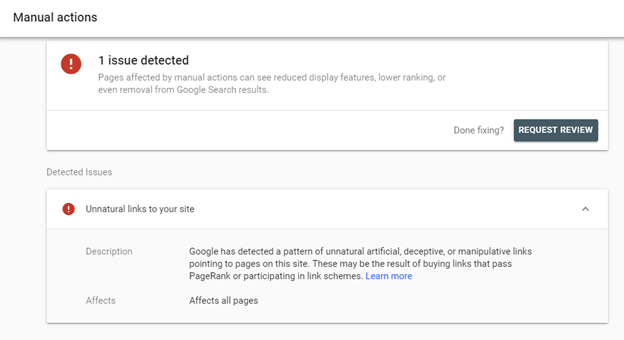Reinventing Web Design: Grapes Studio Lets Small Businesses Build Sites in Minutes
How To Check & Remove Toxic Backlinks

You’ve done everything the right way to get your website found by search engines. You’ve created relevant content rich with keywords, added the right metadata, and ensured your layout is optimized for crawling by search engine spiders. You should be at the top of search engine results – but you’re not. The good news is that you can run an analysis of your backlinks to find the bad ones that may be bringing your website’s rankings down.
In this article, we’ll cover:
- The basics of backlinks.
- How backlinks can both help and hurt your SEO rankings.
- Ways you can identify and remove toxic backlinks with WebCEO.
Let’s start at the beginning and take a closer look at backlinks, how they work, and how they affect SEO rankings.
What Are Backlinks?
Backlinks, which are also referred to as incoming links or inbound links, are connections between one website and another.
Search engines, like Google and Bing, treat them like a vote of confidence from the referring site.
In other words, the more websites that are linking to a specific page, the more confidence the search engine has in the quality of that page’s content, which in turn plays a major role in determining where your site will be ranked.
This makes backlinks a vital part of off-site SEO practices.
Link building is so important, in fact, that there is a specific type of SEO professional who is known as a link builder.
Link builders spend their entire workday building and maintaining backlinks to increase traffic and boost page scores.
All Backlinks Are Not Created Equal
You didn’t think every incoming link was as good as the next, did you?
Of course not, you’re a savvy SEO specialist.
And you already know some backlinks are more valuable than others – and not just because of the traffic they send to your website.
Because we know link quality can vary, it’s time to look further into what separates a good or “safe” link from a bad or “toxic” one.
What Are Good Backlinks?
Quite simply, good or “safe” backlinks help your search engine ranking.
Search engines keep the exact details of what makes quality links under wraps, but good backlinks tend to share the following traits:
1. Good Backlinks Are From Authoritative Sites
Backlinks from popular and trustworthy sites are very useful for boosting your search engine rankings.
This concept is known as “domain authority,” and sites with a high level of authority can pass that “juice” on to your site.
On the other hand, bad backlinks from spammy, low-authority sites can have the opposite effect.
Think about it this way, which would you trust more, a link from the Wall Street Journal or one from a site advertising off-brand Chinese prescription medications?
Search engines feel the same way.
2. Good Backlinks Use Specific Anchor Texts With Your Target Keyword
Anchor text is the word or phrase users click on to visit a linked URL. (For example, “anchor text” in the previous sentence.)
Concise anchor text using your target keyword has a correlation with higher rankings as it gives the search engines a better idea of what type of content is on the linked page.
3. Good Backlinks Are From Sites Related To Your Page Content
Because Google seeks relevant content that provides supplemental information, the search engine values links from related sites over those from un-related sites.
This helps ensure queries are answered with helpful content, rather than random links from sites with no clear connection.
So, while your One Direction fan page may be a must-visit for Harry Styles fans, linking to your used car dealership’s website from it isn’t doing you any good.
And in fact, it may raise red flags and hurt your ranking. But more on that later.
4. Good Backlinks Are Dofollow Links
Make sure any relevant, good backlinks to your site are marked as “dofollow” links.
Search engine spiders track “dofollow” links from one site to the next.
These are the ordinary links you’re used to.
Conversely, search engines ignore nofollow links, or those with explicit instructions to crawlers to pass them by.
These nofollow links are commonly found on things like press release pages and paid advertisements and are not considered when determining your ranking.
That’s not to say nofollow links without their value. Just being mentioned on a high-quality site can give your brand an awareness boost.
However, that nofollow link will not boost your rank on search engine results pages (SERPs).
Nofollow links are basically the digital equivalent of Kylie Jenner tweeting that she loves your jeans.
But for SEO purposes, they’re not doing you much good.
So, where possible, aim for dofollow links.
We’ve covered what good backlinks look like, now it’s time to examine the flip side: bad backlinks.
What Are Toxic Backlinks?
As you might expect, toxic backlinks are ones that hurt your website’s reputation in Google’s eyes.
Many of these types of links have their origin in black hat SEO tactics, unethical attempts to game the search engine algorithm to get higher rankings.
To combat this SEO cheating, Google penalizes sites caught using these black hat tactics.





